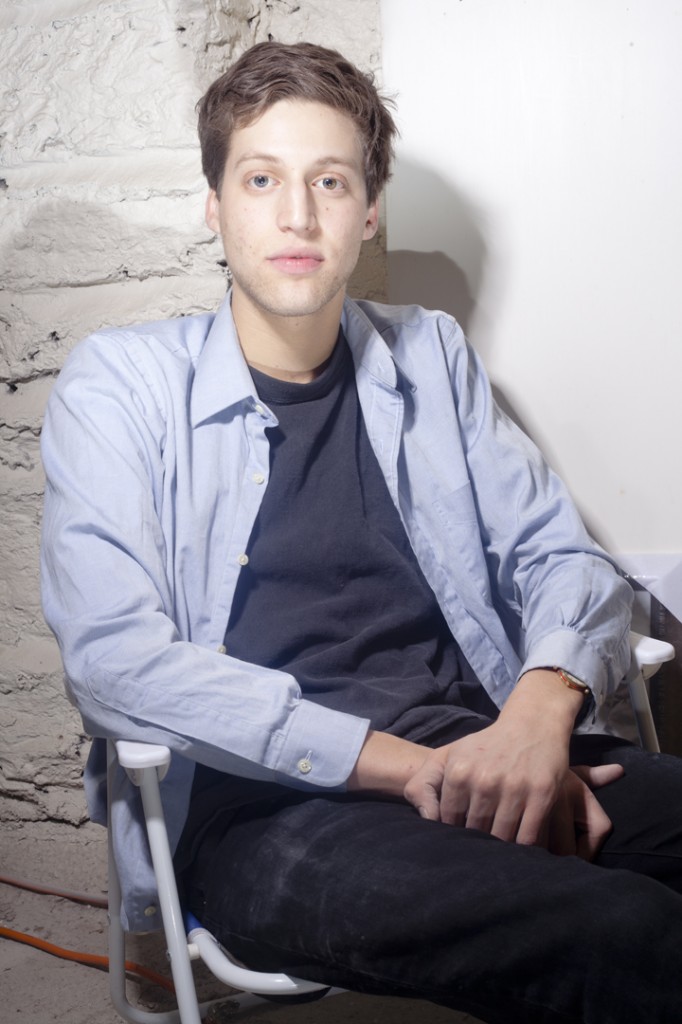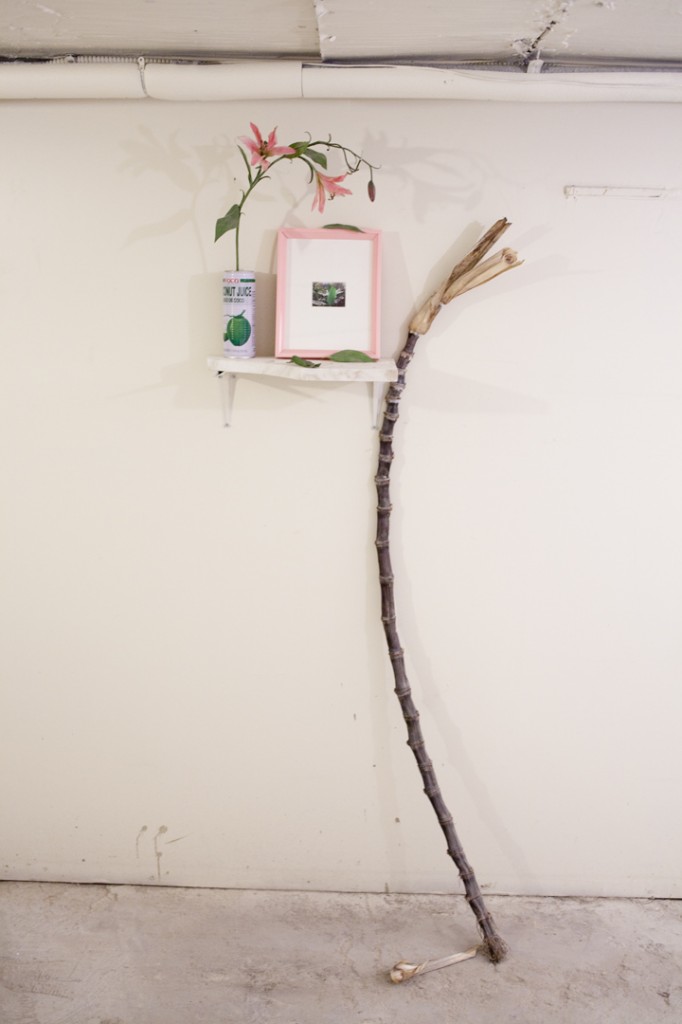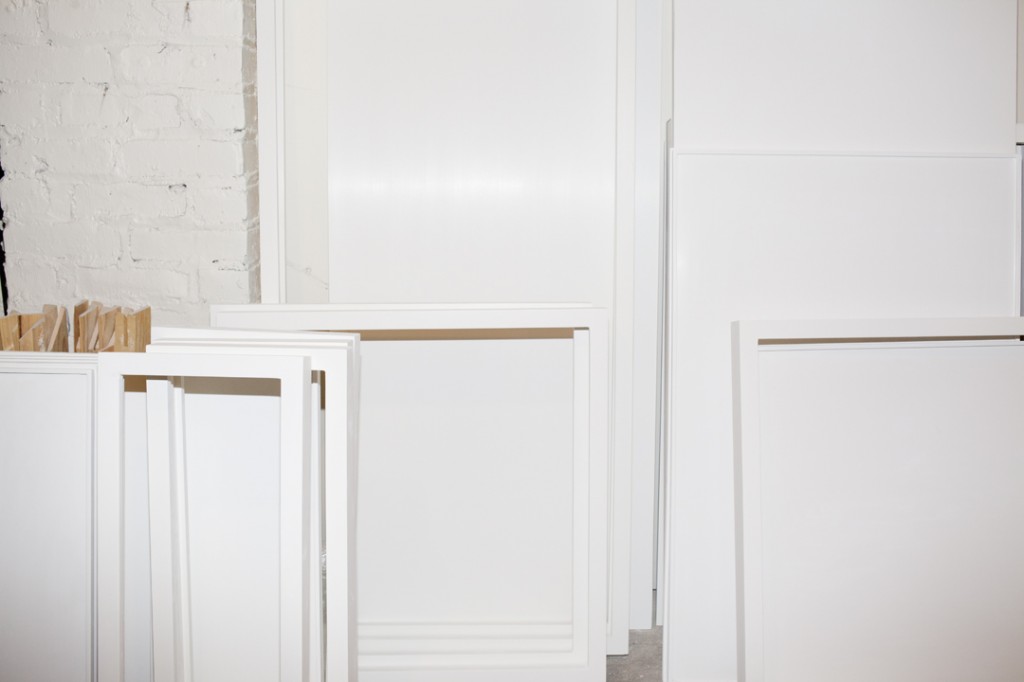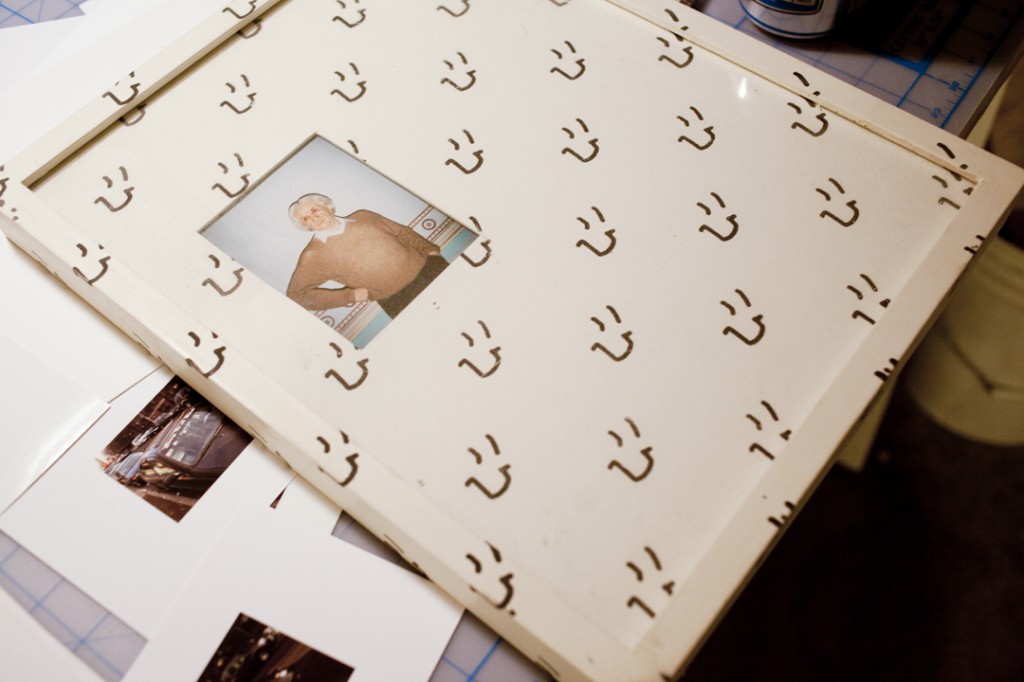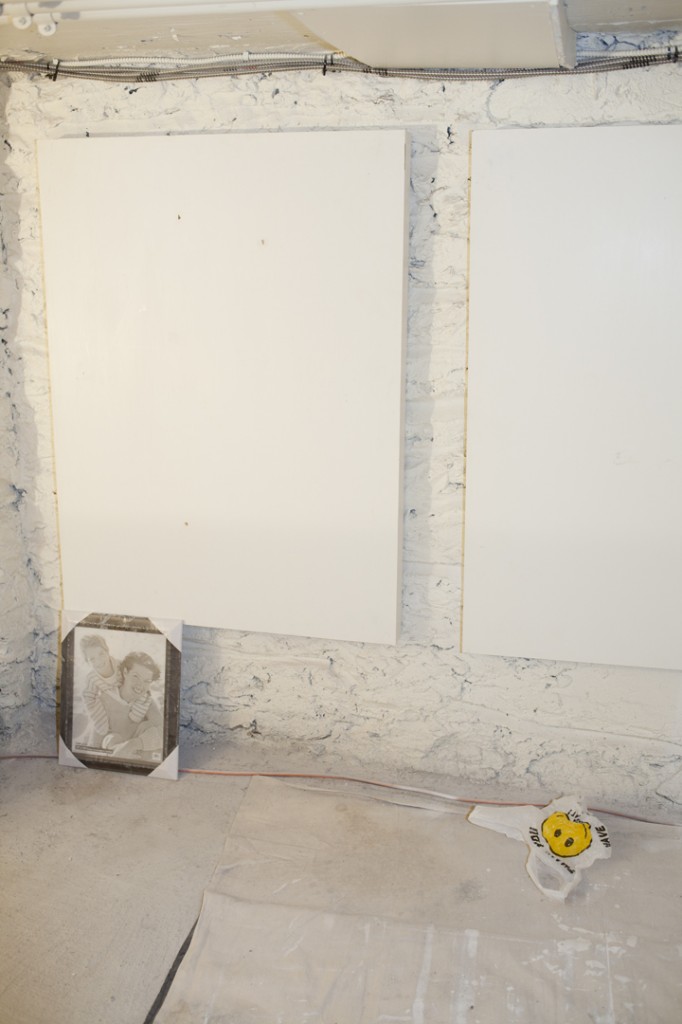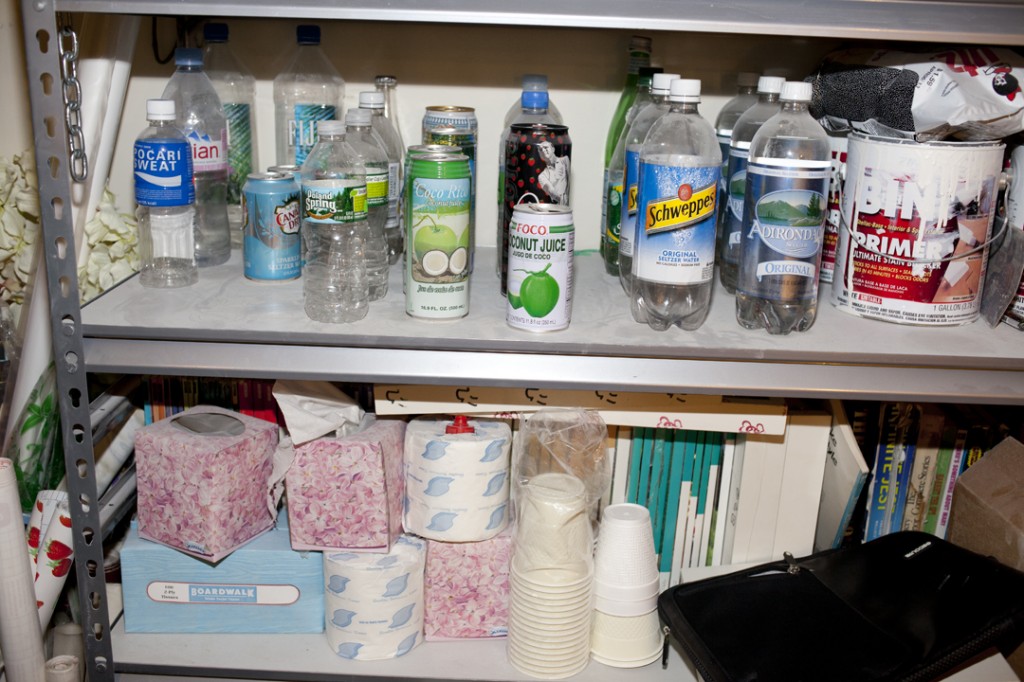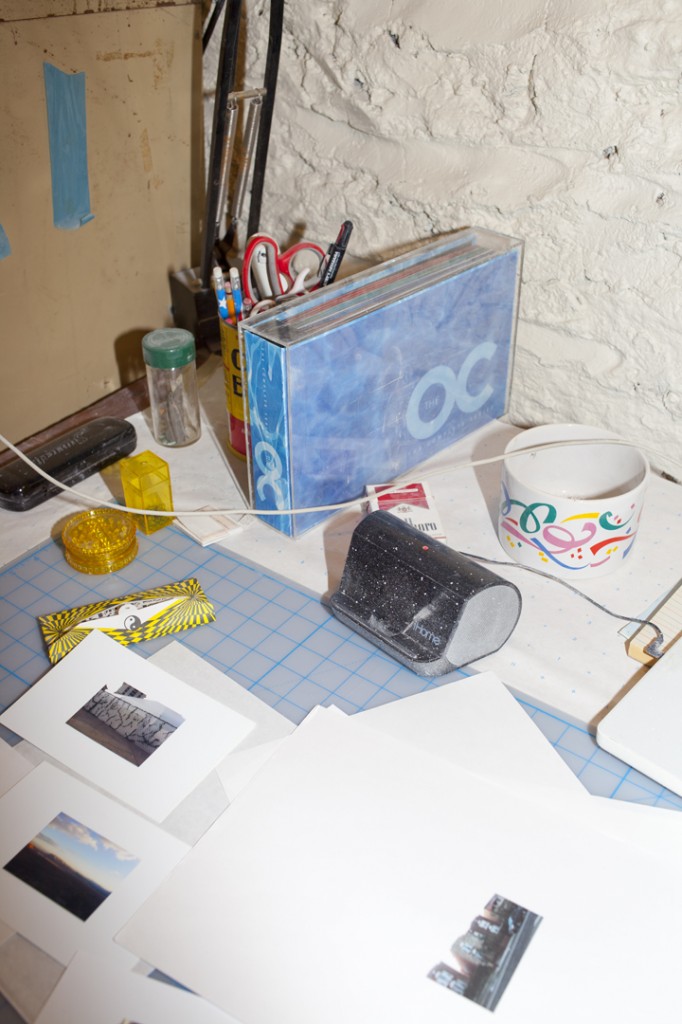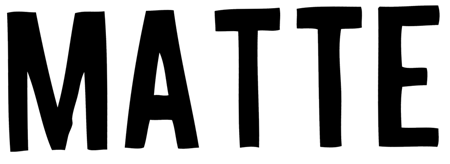photos by Matthew Leifheit for CCNY
Raphael Cohen (1989 New York, NY) Studio Visit
I’m in a dusty white Brooklyn basement and I hear the DVD menu of “The OC” repeating quietly from one of two identical white MacBooks. Innumerable handmade powdery pale frames lean against the wall, all pristinely handcrafted to be supernaturally empty. There is a drafting table littered with small prints of cell phone photos, and there are shelves lined with stuff from anybody’s daily life- bottles, memorabilia, bits of garbage, paint cans. The photos and the stuff are weirdly the same. They are banal, but somehow, in a really sly way, made very beautiful by a shared language of indefinable lightness. This is the studio of Raphael Cohen, he is making small still-lives composed around photographs, and these still-lives dissolve boundaries between art and life.
MATTE Magazine: Describe your interest in what happens outside the area of the image- why are you trying to make still lives outside the frame and using the frame?
Raphael Cohen: The frame really is just a maitre d’ to the photograph. I like to think of the frame as a transitional object between the history of photography and traditional art display and the more experimental one that I’m interested in exploring. While these frames also act as a “structure” or unifying aesthetic element for the series, their significance to me as ambassadors of absence (their “whiteness”) should be considered as a formal material investigation and is specific to only some of the works. The photograph itself is what bounds the image and provokes my desire to expand onto and outside of the frame. The photograph is defined by its edges. By creating a rupture between the horizon established in the image and the one occupied by the viewer, the photograph is acknowledged as a representation of a moment or world. My approach to still life is an attempt to subvert that conception by exploring both the area inside and outside the borders of the photograph, all within the same breath. Thinking of Still and Life as “multi-words” (words with several malleable and far-reaching definitions) helps me to expand what a still life could be. By breaking the border of the photograph with objects placed outside inside and around the frame I am able to expand the viewers area of perception by actually creating multiple horizons. So that the image is no longer being constrained by the borders of the photograph but instead is creeping onto the matboard or the wall. My dream is to be able to expand this viewing space out into the hall, the door, the building, etc. so that the art also becomes about looking, not just what you’re looking at.
Ultimately I want the photograph to act as a player in a larger image whose edges are blurred, non-descript.
MATTE: How do you choose subject matter? Would you even call it that?
RC: Subject matter is indistinguishable from life matter. It is all matter of fact.
MATTE: What is the role of photography in your work?
RC: I like the photograph for two main reasons, each that trickles down into more specific conceptual devices depending on the piece. The first is that photography blatantly introduces a new horizon line to the viewing space, giving the viewer a distinct border between the fantasy of the image and the reality of the space they are standing in. The desire to affect this presumed understanding is the starting point for expanding the piece outside of the frame.
The second is that photography is the most candid way to document. I like the idea that everyone takes photographs and I feel like my photographs are the strongest when they aren’t staged, but instead are capturing my immediate experiences. The photograph becomes a stepping stone between the street and the studio. This second idea is very important and in fact crucial to collapsing my worlds into one. I exclusively use my phone (its an Iphone 5) to take pictures because it is the most immediate camera, I am always carrying it. I will admit that my motivation is not driven entirely by convenience and often I find myself purposely denying more advanced cameras because I like the quality of photograph that I receive from the phone, both the way it captures light but perhaps more importantly the way it creates such a signature image. It is obvious that I’ve used my phone and this conceptually ties back to the ideas that 1. anyone and everyone utilizes photography to document and 2. subject matter is life matter and there is no way (and no reason) to create hierarchal distinguishings.

